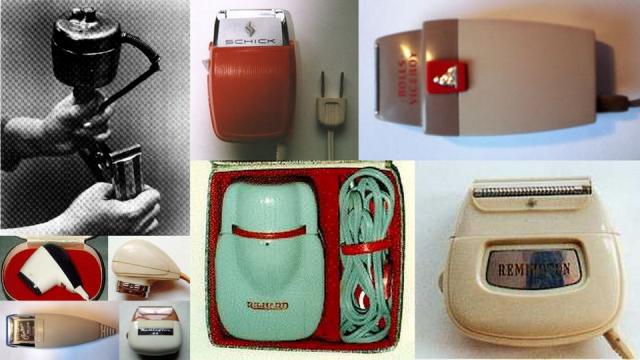When you’re in Alaska staking a mining claim for months on end and it’s the early 20th century, shaving is a major drag.
It’s below 40C, so you have to collect ice and then melt it. Then you have to hurry the heck up before your face freezes. And if you sprain your ankle during your time in the north country? You have a lot of time to think about a better way to shave your face.
That’s how retired US Army Lieutenant Colonel Jacob Schick (yep, that Schick) came up with the idea for the electric razor.
Designing something that could cut beards without water and without injury was one design problem. Another was the power source: Schick’s electric razor required a motor, and reliable ones at the time were not smaller than a breadbox. So Schick decided to build one himself. It took five years, but in 1923 he patented his own handheld motor. It was held in one hand while using the shaver in the other, but still.
Five years after that, Schick applied for a patent on the electric shaver. The basics are familiar: Where the shaver hits the face, there was “a shear-plate with openings large enough to admit hair but small enough to prevent the skin from entering the openings.” Behind the plate was a cutter with teeth that would “allow the hair to be nipped at the surface of the skin.” The blade oscillated, working with the teeth at the back of the plate to slash hair.
In 1929, he put the electric shaver on the market. At $US25, it was a pricey replacement for something you could do cheaply by hand. And the motor, while small enough to hold, was still too bulky to fit comfortably in the hand. Nevertheless, Schick sold more than 3000 electric razors the first year. He continued to tweak the motor, whittling down the size to something manageable — something fit for, his patent says, “hand tools such as shaving machines, hair clippers, vibrators, dentist’s tools, and various other articles requiring such a motor.” (Vibrators? Yeah but we’re pretty sure not those kind, calm down). By 1937 he had sold almost two million.
A wave of competitors quickly came out with their own versions. In 1939, a Dutch engineer named Alexandre Horowitz (at the time employed by Philips; in the US we call it Norelco for some reason) invented the iconic “Philishave” rotary electric shaver with three discs on its surface. And in 1940 the design took another leap forward when Remington released a two-headed shaver.
Since then, electric razor design has mainly been about improving upon the existing structure with more ergonomic and comfortable handles. Engineers are also always trying to get you a super-close shave in just one pass across your visage to prevent irritation. The trick here is using different hair-trapping holes for specific hair types. Neck hairs that typically lie flat are scooped up in slot-shaped holes along a cylindrical “foil”. Cheek stubble standing on end is fed into tiny circular holes. Some razor variations even include face-vibrating technologies that can bounce hair closer to the blade.
We all know that despite these engineering and design efforts, an electric shave is rarely as close as a non-mechanical blade. But our own Sam Biddle contends the electric version is a lot easier and cheaper in the long run than disposables. And it instantly gives that rugged scruff face that the ladies love. Plus, it certainly beats chipping ice.
Images: Simply Switch On! and the International Housewares Association
